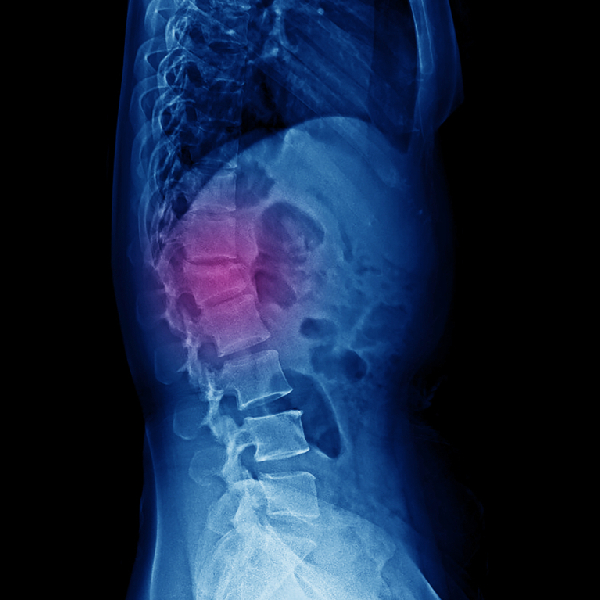R
e
l
e
v
i
u
m
Kyphoplasty (Balloon Vertebroplasty)
Kyphoplasty is a surgical procedure that is used to treat compression fractures of the spine. These fractures can occur as a result of osteoporosis, cancer, or trauma. Kyphoplasty is performed using a balloon catheter to create a cavity in the vertebrae. This space is then filled with bone cement, which stabilizes the fracture and restores the height and alignment of the vertebrae. Kyphoplasty is a minimally invasive procedure that can be done on an outpatient basis. It is typically very successful in restoring function and relieving pain.
Did You Know?
Compression fractures most commonly occur as a result of osteoporosis and tend to affect the thoracic region of the spine. In some cases, however, compression fractures can be found in the lumbar region of the spine.


Kyphoplasty (Balloon Vertebroplasty)
Frequently Asked Questions:
Am I a candidate for a Kyphoplasty?
Kyphoplasty is typically recommended for patients who have sustained a compression fracture of the spine that has not healed properly. It is also generally recommended for patients who are experiencing pain and/or disability as a result of their compression fracture. However, the pain must be related only to a vertebral fracture and not other spinal problems to be an ideal candidate for this procedure. Your doctor will be able to determine whether or not you are a candidate for this procedure based on your individual medical history and the severity of your compression fracture.
What can I expect when having a Kyphoplasty?
Kyphoplasty is typically performed with sedation or general anesthesia, meaning that you will be asleep during the procedure. During the procedure, a balloon catheter is inserted via a needle into the fractured vertebrae and inflated, creating a cavity. The cavity is then filled with bone cement, which stabilizes the fracture and restores the height and alignment of the vertebrae. Kyphoplasty is a minimally invasive procedure, and stitches are rarely needed since the procedure is performed through a needle. The procedure is typically done on an outpatient basis and takes less than an hour.
What can I expect after a Kyphoplasty?
Most patients report significant improvements in pain and function within a few days after undergoing Kyphoplasty. You will likely be able to go home the same day as your procedure and should be able to resume your normal activities within a few days. It is important to avoid strenuous activity and heavy lifting for at least six weeks after the procedure to allow the bone cement to properly set. You will likely need to take pain medication for the first few days following the procedure. Physical therapy may also be recommended to help you regain strength and function. Kyphoplasty is typically a very successful procedure, with most patients seeing significant improvements in pain and function.
Looking for Pain Relief?
Contact us today at 973-200-4695 to schedule an appointment.
Convenient Online Booking for a Seamless Experience
Schedule Your Next Appointment with Ease
Go To Top

